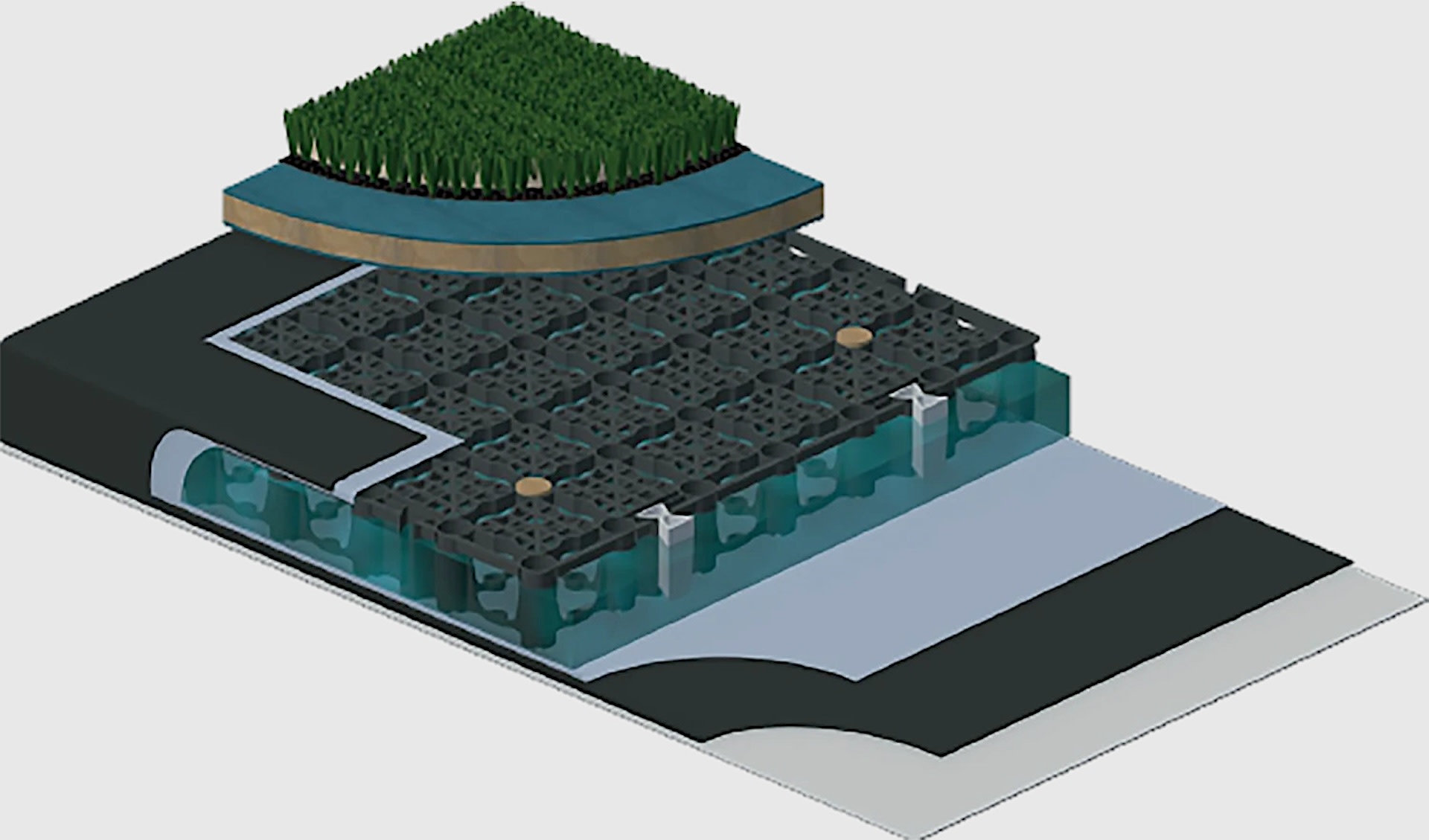Artificial turf installations in densely populated urban zones are a common sight, but these areas are known to get very hot and do not filter rain properly, contributing to the urban heat island effect.
A scientific study posted on Frontiers in Sustainable Cities shows a practical solution to the problem, however. By adding subsurface water storage and capillary irrigation systems, researchers were able to reduce the surface temperatures compared to conventional artificial turf.
This method could play a role in cooling down cities, which can be 15 to 20 degrees warmer than less built-up surroundings.
Artificial turf has been widely used in recreational and professional athletics across both the United States and Europe, with a 2020 market value of nearly $2.7 billion, according to research by the National Library of Medicine. That's expected to more than double by 2027.
The idea was that they're lower maintenance, don't get muddy, and can be resistant to mildew or bacteria. However, they also contribute to increased water runoff and get dangerously hot with the sun beating down on the surface.
The new cooling alternative starts with an 85-millimeter base layer called the Permavoid 85S. This will store water below the artificial surface and includes irrigation. It was originally developed for use with green roofs, as the study notes.
Further details showed that because of high temperatures, artificial turf can regularly exceed the 113 degree Fahrenheit heat-pain threshold. In fact, areas featuring fake lawns require watering to make them safer.
During the study's testing in Amsterdam, part of which happened during a heat wave in June, the cooled turf hit 98.6 F, while natural grass was measured at 95.5 F. That's a significant difference when compared to the results of standard artificial turf, which soared to 144.5 F.
This is good news for proponents of artificial turf and better news for cities that have limited natural options in certain areas.
The elephant in the room, though, is that it's better for the environment and our health to use greener solutions. Artificial turf, even with this improved cooling tech, is still full of plastics and per- and polyfluoroalkyl substances, or "forever chemicals."
While you should try to avoid the use of plastics in everyday life, there are also plenty of natural lawn solutions, assuming you're not crammed into an unnatural urban environment.
Some sports facilities continue to use natural grass, even though it requires maintenance. For homes, there are a variety of grass alternatives, in case you're tired of mowing and watering that green expanse.
Join our free newsletter for weekly updates on the latest innovations improving our lives and shaping our future, and don't miss this cool list of easy ways to help yourself while helping the planet.









